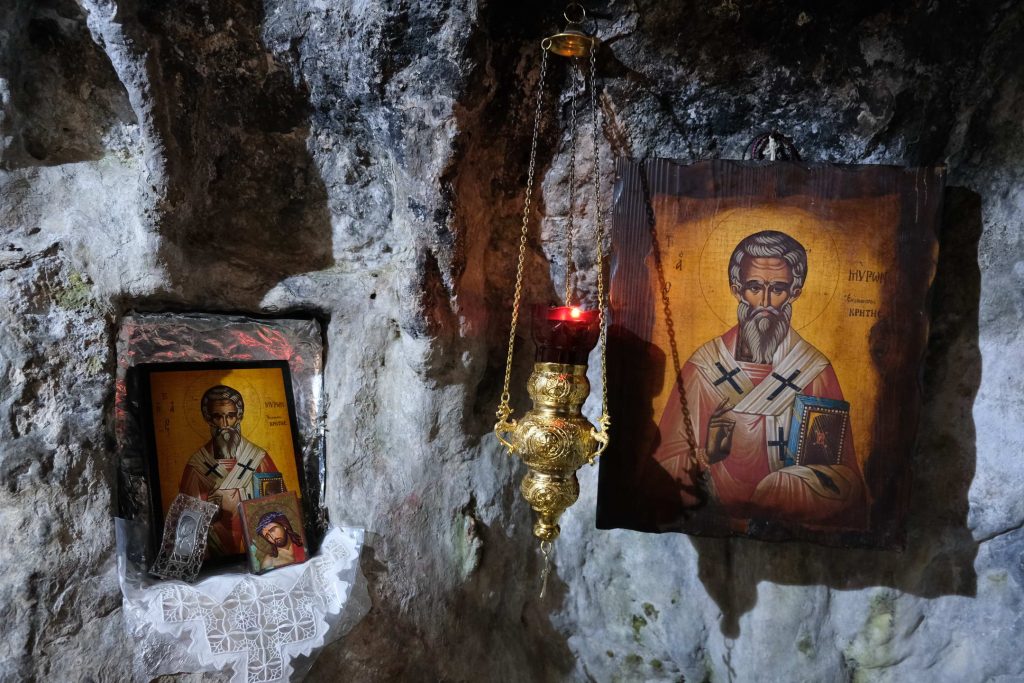Agios Myron is built on a site where the ancient city of Rafkos used to be located and is named after Bishop Myron, who was born and active in this area from the 3rd to the 4th century (250-350 AD). In the center of the village and in a place with unobstructed views, there is the homonymous church, the tomb and the relics of the Saint. Wander the picturesque alleys of the village, where the old coexists harmoniously with the new, admire the panoramic view and the samples of traditional architecture, the most characteristic being the school clock and also the stone fountains, which are associated with myths and traditions of the past.
Do not forget to try traditional delicacies along with local wine or “raki ” in the taverns or cafes of the village. If you love sweets, it is worth visiting the women’s cooperative, where you can sample as well as purchase “xerotigana ”, “moustalevria” cheese pies with sweet “mizithra ”, rusks and many more delicacies made from local products, following old traditional recipes.
In Agios Myronas, events are organized in honor of the Patron Saint on 7 & 8 August; multi-day cultural events, the “Rafkia” also take place every year (1-8 August). So, if you are there any of these days do not hesitate to join! (grilled souvlaki skewers and steaks are served)
Monuments
- Monuments to Georgios I. Makrakis and Michael G. Hatzakis. Monuments dedicated to George Makrakis and Michael Hatzakis, who came from Agios Myronas and participated in several liberation struggles.
- Spiritual Center of the Parish of St. Myron. Restored factory building, located in the courtyard of the church of Agios Myronas, where today the spiritual center is housed.
- Exhibition hall of St. Myron‘s parish (ecclesiastical) located in the courtyard of the church of Agios Myronas. The space also exhibits ecclesiastical items and items of reverence, such as icons, rosaries, etc.
- Gate of an old cemetery in Agios Myron. Go up to the Holy Temple dedicated to the Lord’s Transfiguration and St. Charalambos and you will see the particularly impressive gate of the old cemetery. The courtyard area has been designed in such a way as to host the events that take place in the village.
- Venetian stone-built spring in the district of “Kato Vrisi”
Monasteries – Temples
- Church of St. Myron is built in the center of the village. In the interior of the church, there is the tomb of the Saint containing his relics.
- Holy Church of the Transfiguration of the Savior and Saint Charalambos. Head up to the Holy Temple of the Transfiguration of the Savior and Saint Charalambos and you will see the particularly impressive gate of the old cemetery.
Gastronomy
The area is especially known for the production of “tsikoudia ” and wine. If you want to see the traditional way of making “raki ”, you should visit, upon arrangement, one of the “rakokazana ”. The women’s cooperative is also worth a visit, where you will have the opportunity to sample as well as purchase famous “xerotigana ”, spoon sweets, “kalitsounia ” and countless other delicacies, made with pure ingredients by women of the village, following traditional recipes.



